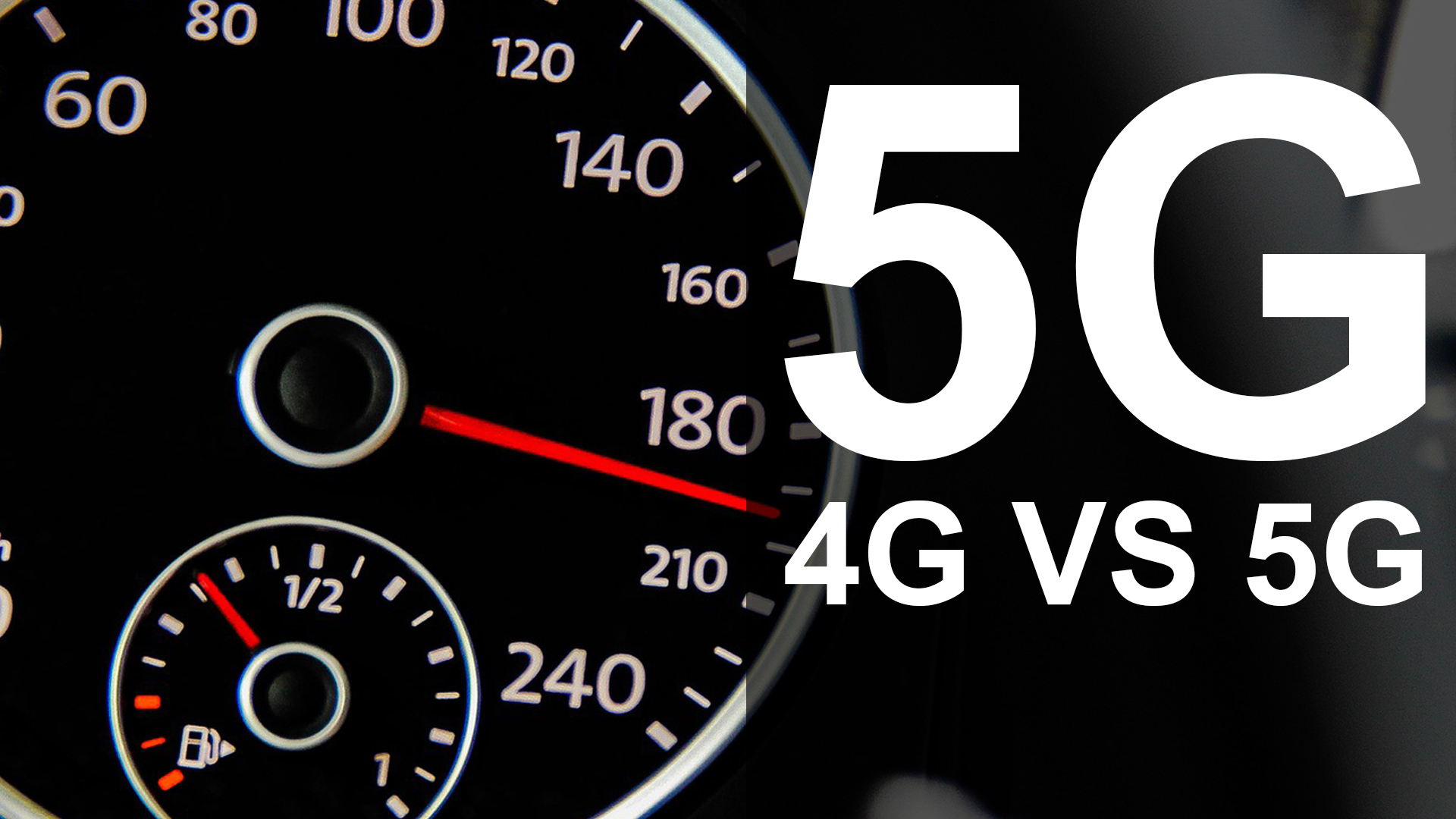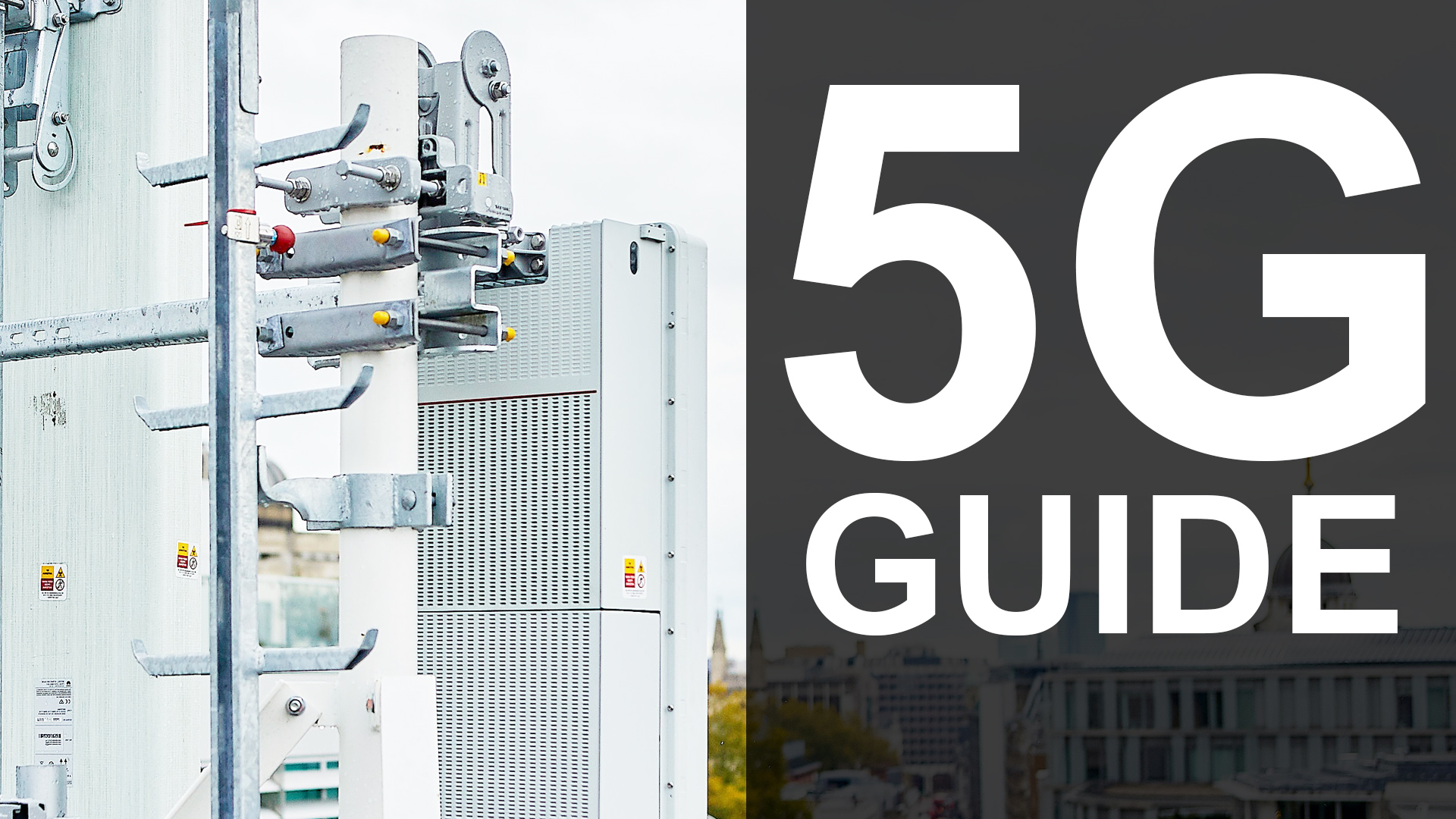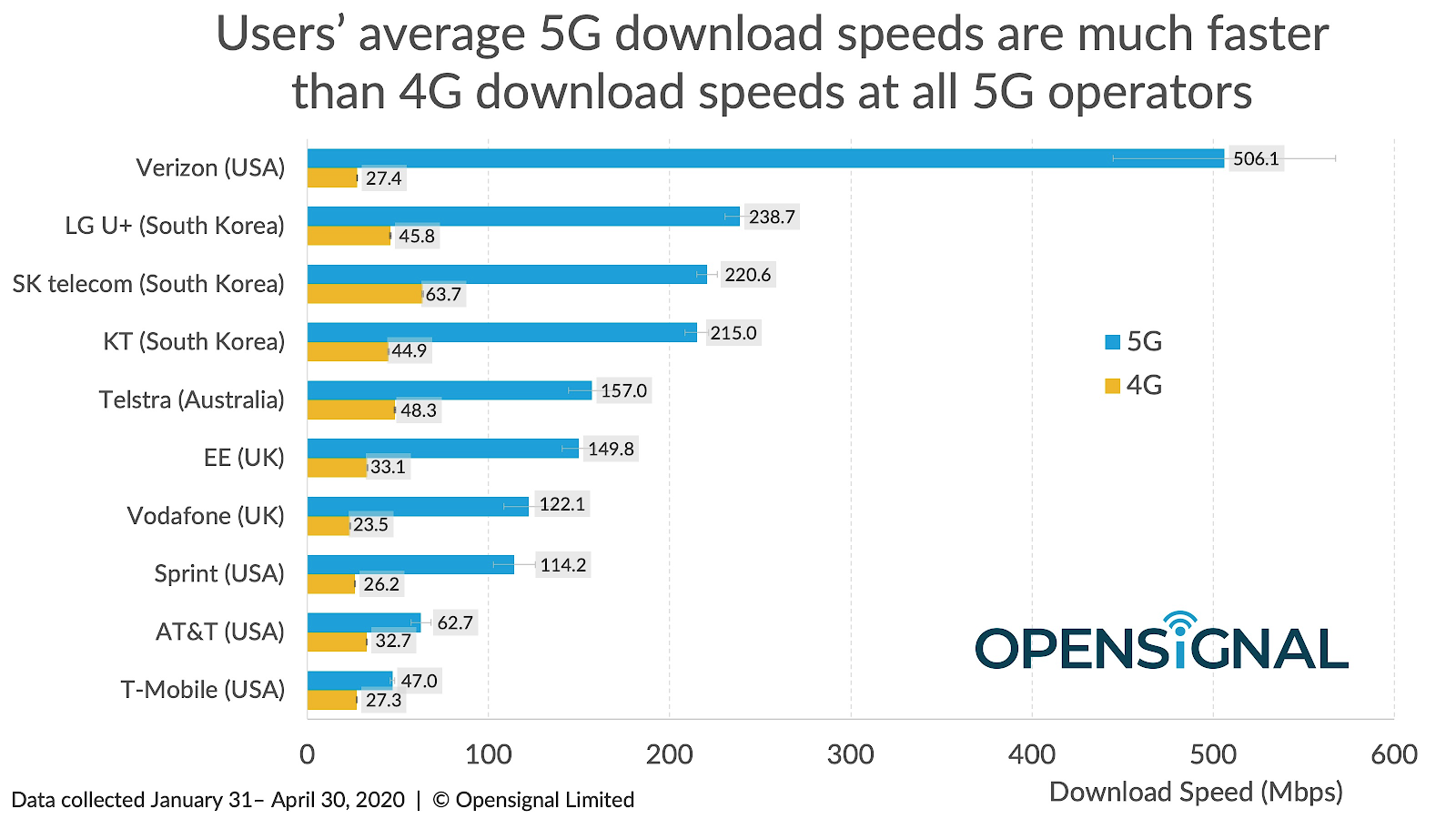4G vs 5G: discover the key differences
We compare 4G vs 5G and reveal the major improvements.


5G technology: how it works
5G use cases: examples of 5G
5G Dangers: the fact and fiction
5G Internet: will it replace fibre
5G security: the full picture
5G speed: guide and tools
5G deals: get the best offers
5G phones: discover the best
5G networks: in the US and UK
5G stocks: investment tips
As you'll know we're all about 5G on this site, but what are the key differences between 4G and 5G?
Whereas 5G is the next generation of mobile technology, 4G is the outgoing standard, right? Well no. 4G isn't a thing of the past. Indeed, it's staying as the mainstream mobile connectivity standard that will keep more remote communities connected. Gradually they'll transition to 5G, but 4G will be there as a backup.
2G will also remain as a basic standard used by devices such as smart meters, but it's likely that we'll see 3G turned off in due course and that spectrum repurposed.
Although 4G technology will remain in place, there are some significant hardware and software differences in the 5G network compared with that of 4G. That's what this feature looks at.
According to a global study of businesses by Accenture, 79% believe that 5G will have a significant impact on their organisation with 57% of those believing that it will be revolutionary. However, the most relevant part here is that in terms of the impact of 5G vs 4G, only 24% of businesses questioned said they believed that 4G’s impact was revolutionary.
The speed difference
Although there are numerous differences between 4G and 5G that we'll outline in this feature, the speed of both 4G and 5G networks are determined by the regulating board for cellular networks, the International Telegraph Union Radiocommunication (ITU-R).
The board mandated that downloads for 4G had to be 100Mb/s when moving, and 1Gb/s when stationary. This proved difficult for most networks and was behind the very name used for 4G services - Long Term Evolution (4G LTE) - the name pointing towards the fact the technology was considered to under constant development. Indeed, it's the fruits of that constant development that we're seeing today with the advent of 5G.
SIGN UP FOR E-MAIL NEWSLETTERS
Get up to speed with 5G, and discover the latest deals, news, and insight!
10 years ago you could barely have envisaged watching a live sporting event in high definition on your phone while you're a passenger in a moving car or train. While coverage is still patchy, that is now possible as are much-better quality video calls and downloads actually worth waiting for. Streaming music is also now something for every day rather than futuristic pie in the sky.
As for 5G, the ITU-R has specified a theoretical peak download speed of 20 Gb/s per second and 10Gb/s upload for 5G. That's a significant improvement again as you'd expect. And we'll be streaming 4K rather than HD footage because of it.
According to business website Raconteur, latency – the time between command and network response – is around 20-30 milliseconds for 4G, but 5G users can expect latency of less than 10 milliseconds.
These differences in delay may not be important or even noticeable for consumers or prosumers, but temporal precision on a production line, or during a medical operation, will be crucial to their smooth running.
| Network | Speed | Latency | Transmission technology |
|---|---|---|---|
| 4G LTE (4G proper) | Max down: 100Mbps (1Gb/s) Max up: (50Mb/ps) | 20-30 milliseconds | Multiple input / multiple output (MIMO) |
| 5G | Max down: 20Gb/s Max up: 10Gb/s | Less than 10 milliseconds | Massive Multiple input / multiple output (MIMO). Beamforming |
5G faster than 4G LTE in every case
In a review of 10 leading mobile network operators (MNOs) around the world – undertaken by mobile testing company Opensignal – network speeds in the Australia, South Korea, the UK, and the US, were tested. 5G performance was measured against what customers could get via 4G LTE, and whilst the average 5G speed varied dramatically across the ten 5G operators, in every case 5G was dramatically faster than 4G.

As with previous studies from Opensignal, South Korea performed better than every other country when it came to 4G LTE, which mirrors the country’s historically strong 4G performance.
"Korea was the only country where smartphone users enjoyed an average mobile download speed of more than 50Mbps before the launch of 5G services," OpenSignal said. "The average mobile download speed in 87 countries was 17.6 Mbps, which is only one-third of Korea's."
4G vs 5G: what frequencies do each use?
5G uses many of the same radio frequencies as 4G (the 799Mhz low bandwidth spectrum and the 3.4-3.8Ghz high bandwidth spectrum). But it also uses very high frequencies, too.
The main chatter about higher frequency 5G is around millimetre waves (mmWaves) which come from the very high-frequency part of the spectrum – above 6Ghz (this tends to be referred to as the 26GHz band).
mmWave is available in selected areas of the US, but hasn't yet reached Europe. It means a faster, more dense transfer of data over the air and allows for more connected devices at any one time.
Essentially, it's the 5G standard for dense urban areas. It provides increased capacity, low latency and consistent coverage even in areas like sports grounds, concerts or other situations with high traffic demands. So yes, we should finally be able to get a data signal when we're at the game.
Another difference between the two networks is that 5G uses many more small cells and small cell networks compared with 4G. According to a recent McKinsey report, a 5G small cell network would see something like 15 to 20 sites per square kilometre in highly populated urban environments, as opposed to two to five sites with 4G.
4G vs 5G: MIMO versus Massive MIMO
Although wireless and 4G networks use multiple input multiple output technology (MIMO), a core component of 5G networks is ‘massive MIMO’.
MIMO means Multiple Input, Multiple Output and, essentially, it allows for multiple streams over the same data channel. This means hugely increased data capacity, especially over a system that uses an especially high number of antennas – this is an increase from something like four antennae for 4G, to something closer to 100.
This will increase capacity and performance without requiring more spectrum and is likely one of the key ways we'll see networks develop.
Massive MIMO networks also use beamforming, a technology that directs a signal towards the device in use. This allows for an optimum signal to be transmitted to the mobile and received from it while cutting interference to other devices. By comparison, 4G technology currently illuminates an entire area. But that isn't necessary if the network is intelligent enough.

5G also makes use of Software Defined Networks (SDN) in its base stations allowing for network function virtualisation (NFV).
Put simply this technology helps it ramp up services where there is demand and scale down the same services where there is not. It also allows for ‘network slicing’; which will see the partitioning of network architecture for specific uses, such as the IoT, a factory or the smart energy grid, meaning network operators will be able to tailor their services according to specific customer requirements, according to Science and technology website, Science Direct.
One advantage of using the high-frequency part of the spectrum, as well as the parts used for 4G, is that there is more spectrum available for 5G operators, resulting result in lower latency and better service.
According to Raconteur the average operator in the UK might currently have 100 Mhz of entire spectrum to use for all of its UK customers, but once 5G is fully rolled out this could increase to around 1,000Mhz. However, this isn't yet confirmed.
In the UK, mobile network Three claims it has the fastest 5G network thanks to its allocation of 100Mhz of contiguous spectrum. In other words, it's all in a single block. Some of the other UK networks aren't too happy about this allocation and there's currently another Ofcom spectrum action taking place to redress the balance. After this, no UK network will be able to hold more than 37 percent of the available spectrum.
Benefits and use cases
5G use cases often focus on automated cars and smart cities, but there are many other ways in which the technology can be used. One interesting and recently-piloted service was that of the connected ambulance by 5G Barcelona, a laboratory designed to test 5G technologies.
These vehicles use the 5G network and dedicated communication to receive specialised remote support in real time while caring for a patient inside an ambulance.
Remote medical staff can view a camera’s image in real time, alongside a monitor showing a patient’s cardiogram, blood pressure and other statistics. A physician can then provide instructions to assist with the patient’s care. The ambulance is able to connect with other vehicles to move through traffic more easily.

5G connected sensors will also allow for automated farming, meaning no unnecessary irrigation as well as an accurate analysis of soil enabling better crop rotation. One current use, reported by Reuters, is being used at the Agricultural Engineering Precision Innovation Centre (Agri-EPI Centre) in Shepton Mallet, Somerset where a collar on cows controls a robotic milking system.
When the cow feels ready to be milked it will pass through automatic gates to a milking device that recognises the individual cow and latches precisely onto its teats. The farm also uses sensor-operated curtains that open depending on the weather, as well as a smart feeding system. 5G means this dairy farm is less labour intensive and more efficient than a normal farm.
4G vs 5G: what are the benefits?
The advantages of increased speed and lower latency have been widely publicised, but increased bandwidth will make the technology more reliable. Full activation of the IoT is likely to lead to benefits that we can’t event conceive of yet, not least, energy saving smart grids, and smart cities. Similarly 5G may also fully enable mobile working augering a sea change in employment practices. It may not be necessary for employers to ever meet their employers face to face.
There are some disadvantages to 5G too, however. The deployment of many more cells than were required for 4G will be costly. In an analysis of one European country, McKinsey predicted that network-related capital expenditures would have to increase 60 percent from 2020 through 2025, roughly doubling total cost of ownership during that period.
A report from Science Direct also predicted that that although 90% of the UK population will be covered with 5G by 2027, coverage is unlikely to reach the final 10% due to exponentially increasing costs.
Another effect of having more cell towers with more intense bandwith over a smaller coverage radius might be that coverage drops out more often; this will be particularly true while 5G is still being rolled out.
Another potential problem might be that 6Ghz is an already crowded radio frequency since it transmits satellite, and other radio signals. This may disrupt the sending and receiving of data.

Nicola Brittain is a freelance journalist with expertise in technology, telecoms, media and finance. She worked as news and analysis editor at Computing Magazine, and more recently has freelanced for Diginomica, Investment Week and Portfolio Adviser. She is currently writing a novel.

